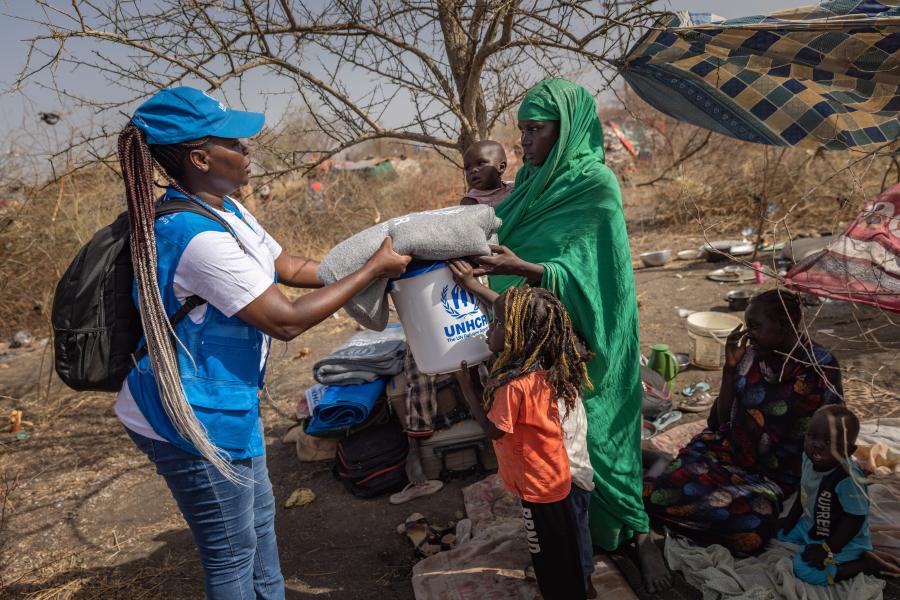2023 population planning figures
-
Refugees and asylum-seekers: 2.19 million
-
IDPs: 2.27 million
-
Refugee returnees*: 661,000
-
Stateless persons: 16,000
*Cumulative refugee returnees. Some of these recorded returns may represent pendular movements.
2023 situation overview
The South Sudanese refugee population, more than 65% of whom are children, remains extremely vulnerable. This protracted situation is the largest refugee situation on the African continent. Over 2.3 million refugees hosted in neighbouring countries live in often precarious conditions, exacerbated by various factors such as the extreme drought and food insecurity situation in the region and the continued impact of the COVID-19 pandemic. 90,000 South Sudanese have fled to neighbouring countries since the beginning of 2022, while 87,000 returns have been recorded.
After nearly a decade of conflict and despite efforts toward implementing the peace agreement, South Sudan continues to grapple with sporadic violence, chronic food insecurity and devastating flooding, often affecting achievements on the humanitarian front.
The UNHCR non-return advisory advises States against the forced return of refugees to South Sudan, and UNHCR does not facilitate return, however, over 600,000 have chosen to return on their own accord since 2017 to areas that are often unable to provide basic services. UNHCR will implement the “Pockets of hope” initiative to help returning refugees have a successful fresh start.
In 2023, UNHCR will continue to provide support to host countries to uphold the quality of asylum for South Sudanese refugees in the region, with keen attention provided to women and children, who make up the majority of refugees. Life-saving support will include preventing and responding to gender-based violence as well as contributing to gender-based violence risk mitigation across the response. Legal and physical protection will be strengthened and biometric registration, documentation, and data management in collaboration with host governments will be enhanced. The social cohesion between refugees and host communities will also be promoted, as well as working with asylum countries to achieve comprehensive and sustainable solutions. UNHCR will also maintain readiness for any possible displacement linked to the scheduled general election in 2024.
The South Sudan Regional Refugee Response Plan includes 105 operational partners and will cater to the needs of nearly 2.16 million South Sudanese refugees in the Democratic Republic of the Congo, Ethiopia, Kenya, Sudan and Uganda in 2023.
